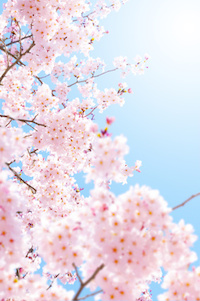 For some odd reason, it was the fresh new red-orange barberry leaves that I looked forward to in the spring, when I was a small boy on the farm.
For some odd reason, it was the fresh new red-orange barberry leaves that I looked forward to in the spring, when I was a small boy on the farm.
At this time of year they were bursting out of the drab old hedges all over the farm, and while they were already fitted with tiny spikes, the little points weren’t yet hard and could easily be avoided by the tongue as one bit into several of the leaves. Their taste was tart and sour, yet they left a strangely refreshing tingle in the mouth, something I really enjoyed after a long winter of thick soups, gravied roasts, spicy stews, steaming fish kedgerees and rib-sticking morning porridge.
There was nothing in any way wrong with that good, wholesome farm tucker, and after a miserable wet day working in mud-ridden paddocks there was huge pleasure in a big steaming bowl of solid vegie soup that got dinner off to a good start.
Yet when the barberry began to sprout its new pale upright twiglets, and then the little fresh leaves appeared, there was always a purse-mouthed delight in chewing on those first selected half-dozen or so astringent sprouts. They were all part of the changing days, and right now, out across the Waikato a new season is burgeoning its brilliantly-colourful way into the coming sunshine. It’s not just autumn that can claim for itself the broad pallet of nature’s colours.
I’ve covered a portion of highways and byways round the Waikato over the past week, and in spite of several lashing rain storms the region’s blossoms are really superb. Around Te Awamutu particularly, but elsewhere as well, the masses of vibrant pink cherry blossoms give strong indication that spring is here, and within the next week or so sections of streets and footpaths and farm paddocks will be smothered in slowly-melting pink carpets as the flowers are shed to make way for strident green leaves. Magnolias and kowhai have been spectacular too this year, and growing numbers of tui are heard and seen as they flash between these producers of rich nectar. Increasing numbers of tui have been seen in towns around the Waikato, sometimes haggling and bickering with each other over ‘ownership’ of a single tree or small patch of urban garden. They’re now becoming almost commonplace, where a decade and more ago they were rarely seen in the region’s towns or city, and their clanking, chortling, trilling calls now add a whole new realm of sound to the day.
It’s all part of the far-sighted halo programme, put into effect about a decade ago, where individuals and local bodies were encouraged to plant nectar-bearing trees, especially kowhai, in private gardens, public parks, along roadside strips and in corners of otherwise difficult farmland. The results have been spectacular, and the public is responding with delight at the expanding presence of tui in places where there have previously been none in living memory.
It’s the other colours of spring as well that add so much to the enjoyment of the season and its increasingly long daylight hours. The land is suddenly vibrant with a raft of different colours, and each of those colours itself has a hundred different shades.
Predominant among them are the yellows, the golds and the lemons – the yellows of millions of daffodils that line farm driveways, private gardens or splurge in ever-widening ponds of strong ‘sunshine’ across close-cropped paddocks. They truly look spectacular; and among them may be sprinkled the sickly-sweet smelling white-flowered early cheer, or the smaller, more delicate two-toned gold-and-yellow or white-and-yellow jonquils. These latter are interesting little flowers, also called the narcissus, a Latin term meaning ‘stupor’ or ‘numbness’ – and there is some academic debate over whether this term is used because of the flower’s potent scent, or, more sinisterly, the rather harmful poisons in the plant’s bulb.
Lemon and orange trees are also displaying masses of bright fruit, set off well against the trees’ dense foliage of dark, shiny green leaves. I saw too a small but thick patch of brilliant yellow lotus major on a roadside the other day. In bygone times lotus major was considered one of the best grasses for stock food, either green or as a hay additive, and my Dad always looked on it mostly kindly.
Gorse, insidious and originally imported as a much-desired hedge plant, is glibly showing off its myriad golden flowers, as though it were a natural part of the landscape and belying its unwanted status. But big dried withering patches of the invasive nuisance here and there show where competent land-owners have taken strong action against it, hosing it down last autumn with a powerful weedkiller. In another year or so it will have rotted off at ground level, and stock will begin the process of trampling the decaying remnants back into the soil.
Also along the roadsides are great belts of flowering wild onion, the highway edges awash with hundreds of metres of white clouds that look delightful to the passing motorist and are a cursed nuisance to the farmer should the weed spread into adjacent paddocks. Stock dislike the horrible stuff, and if you walk through it your boots and trouser legs will reek of onion for several days.
The elms too, and some of the other larger trees – poplar, oak, plane and willow among them – are all bursting out into early leaf, and in the process are smothering their scrawny winter nakedness with what at first was a diaphanous see-through faint mist of faded lemon, but which now is daily becoming denser, richer and more obviously green. The elms, of course, will stay staunchly yellow for months yet, while the oaks and poplars will forge themselves darker forest greens, and the willows will be happy to wave long tendrils of softer, lighter emerald at the passing world.
Native trees such as kahikatea, miro, totara and rimu are more subtle and modest in their spring show-off, displaying tentative little shoots of pallid colour on outer branch tips, nowhere near as strident or obvious in their annual growth as the more aggressive imported deciduous specimens. Perhaps the indigenous plants feel that as they’ve been here for the past ten million years and more, and have lasted well during that time, they have nothing to prove beyond the obvious truth that they’re still here and are doing well. Yet their seemingly insignificant annual additions to tree growth all add up over the next 500 or 1000 years. They’ll probably still be staidly growing those insignificant sprouts when the ‘imports’ have fallen to bits and rotted long since.
Photinia hedges are another brilliant display of colour at this time of year, rushing into fire-engine red in the hedges along highways, around homesteads and in urban gardens. Their new season growth always adds a vibrancy to the landscape, and is yet another harbinger of spring. There are also the multi-trunked pinky-lilac-coloured toons, with their long, leggy stalks rearing high and their colourful fronds sprawling out above a range of other lesser garden plants. They are always so obvious to start with, but later in the season they fade into insignificance.
And from the land itself come yet other colours that indicate winter has done its run and is being bundled unceremoniously aside. Farmers are feeling the need to utilise the abundance of spring and the prospect of a coming summer with its attendant harvesting season.
Already excess pasture, a consequence of the mild winter and warm, wet spring, is being stored away by prudent land managers, as can be seen by the growing numbers of large pale-green plastic-wrapped bales dotting paddocks or neatly stacked in sheds and out-of-the-way corners.
Elsewhere dark brown slabs of open paddock have been ploughed and rotary-hoed, massive modern machinery attacking the hard-packed ground with ease and tearing it open to the air and elements. The rich soil shows in strong burnt-coffee contrast to the surrounding green fields, and the recent slashing rain storms have flattened the worked-up tilth, leaving it moist and fecund and ready for the imminent plantings of corn or other more exotic crops. In a matter of a few weeks these paddocks will be sporting lush greens as the new growth bursts upwards.
There’s always something going on out there, and it’s a fascination to watch.
Kingsley Field is a columnist with the Waikato Times in Hamilton. His Outdoor columns appear fortnightly. He has recently published his second illustrated volume of the columes. He can be contacted at kingsley(at)accuwrite.co.nz









Join the Discussion
Type out your comment here:
You must be logged in to post a comment.